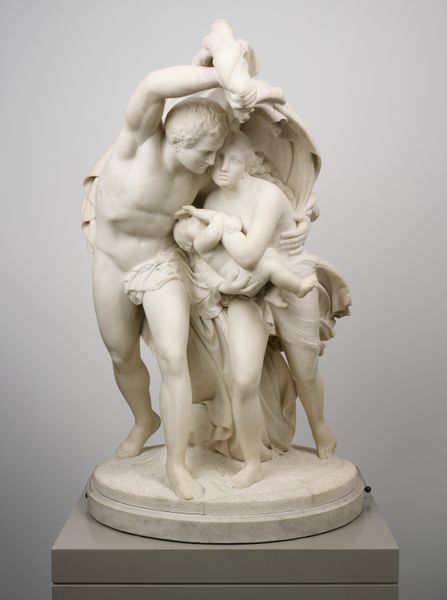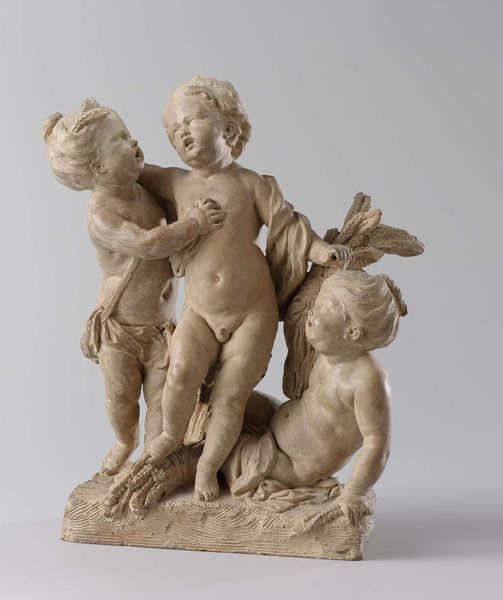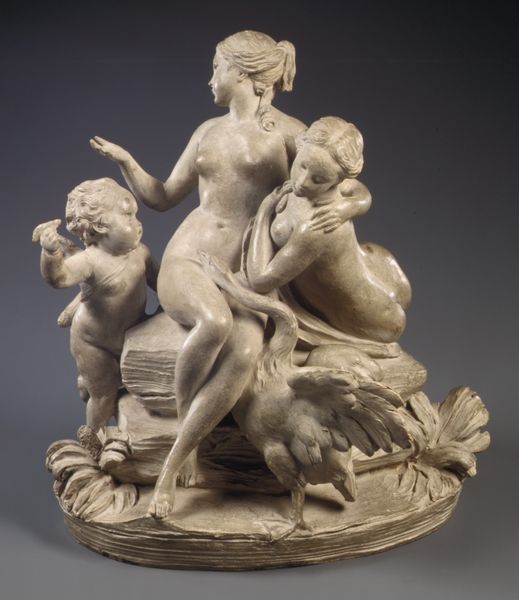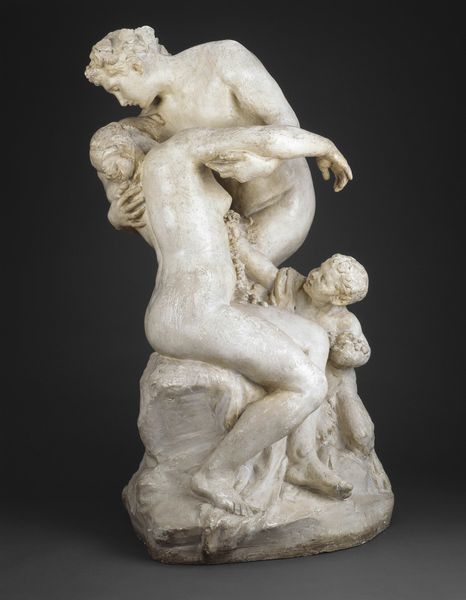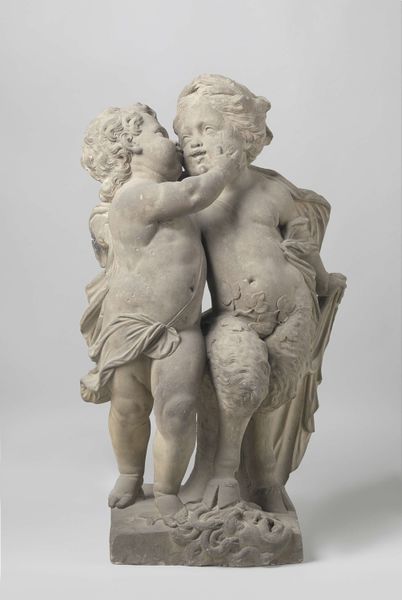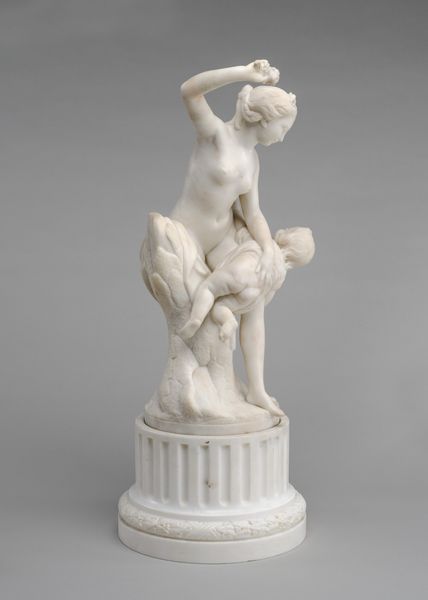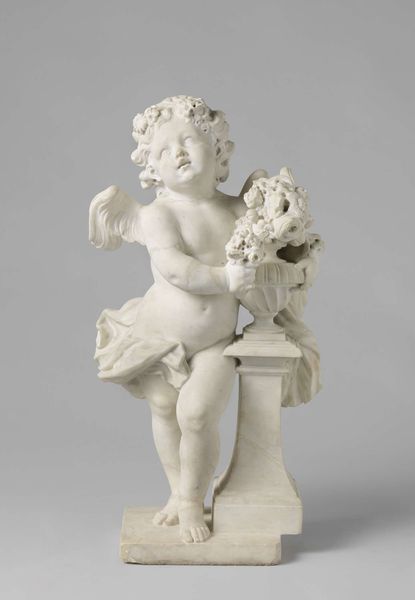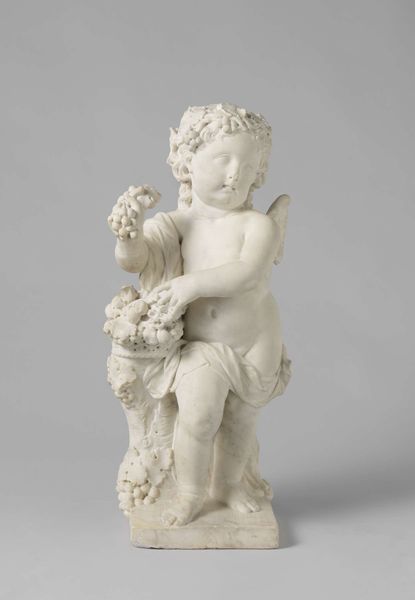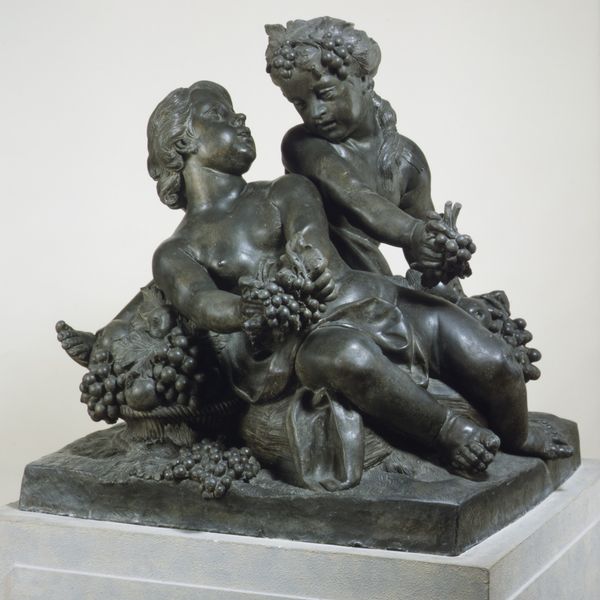
Dimensions: height 53 cm, width 35 cm, depth 23 cm, weight 24.4 kg
Copyright: Rijks Museum: Open Domain
Editor: This baroque marble sculpture, *A Boy and Girl Playing, Allegory of Autumn?*, made sometime between 1740 and 1800 by Michiel Emanuel Shee, strikes me as rather saccharine. It’s those chubby bodies, the idealized forms. How do you interpret this work? Curator: Well, I think it’s essential to unpack the socio-political context in which this sculpture was created. Think about the Baroque era: opulent displays of power, deeply entrenched class structures, and burgeoning colonial exploitation. How might these elements influence the representation of childhood? Editor: I see what you’re getting at. The idealized children, presented almost as commodities… Curator: Exactly! These aren't just cute kids. They're symbols embedded within a system. Consider the probable patrons of Shee's work. Their ideas about childhood innocence and its relationship to inherited privilege would shape the reading of the sculpture, don't you think? Editor: That’s a good point. But why pose them in such an overtly erotic way? Isn't that a rather modern perspective though? Curator: The Baroque gaze itself can feel rather hypersexualized when looked at through a contemporary lense, even if innocence was claimed as an excuse. Perhaps it can act as a critique, knowingly or unknowingly by the artist. How do we grapple with this tension? Is there space for critique or new interpretations within traditional, inherited power dynamics? Editor: I'm not sure I would've picked up on any of that by myself. It's amazing how knowing the historical context reframes everything. Curator: Absolutely. Analyzing the power structures behind the creation and reception of art enriches our experience of any object, doesn't it? It goes far beyond an analysis of the surface form of this playful moment. Editor: Definitely food for thought, thank you.
Comments
No comments
Be the first to comment and join the conversation on the ultimate creative platform.


